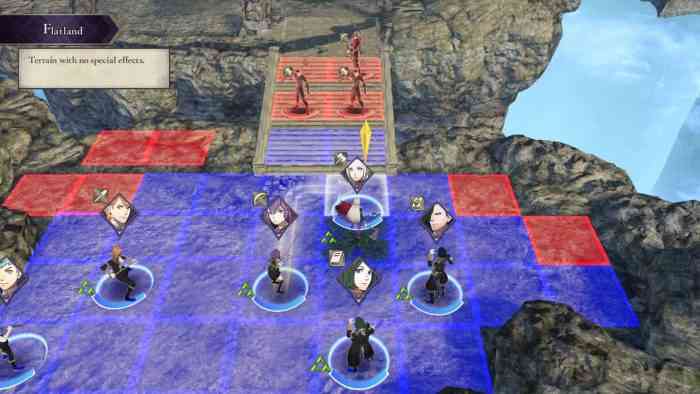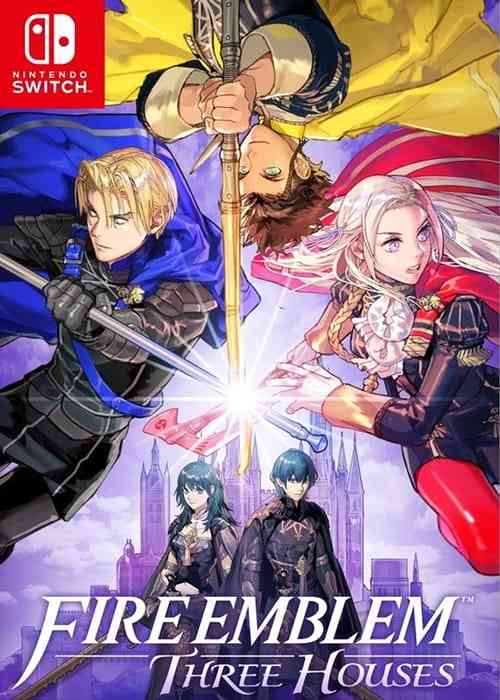Fire Emblem: Three Houses Review
Fire Emblem games occupy a weird space in my brain. I peel away and shuck things like narrative, aesthetics, and atmosphere without a second thought. No, I’ll take the obsessive minutiae, the deep strategy, and the social metagame, thank you very much. Even within this smaller sphere, I just want to spend hours crafting a crack team of mercs at the expense of every other character. Sometimes people fall in love? Fire Emblem: Three Houses is no exception. I’ll save the world at some point, I’m just very close to maxing out my sword skills.
Three Houses gets its namesake from the first major decision you make in the game. After a brief tutorial battle, you’re prompted to choose between three young warriors of exceptional standing. Your choice leads you to an allegiance with one of the three great kingdoms of Fodlan. In spite of my fondness for min-maxing, I made a snap decision: the prettiest one. Foolish perhaps, but a sound strategy nonetheless. There’s no way to see it all in a single playthrough, so you might as well go with your gut. This same philosophy extends to one of Fire Emblem’s most infamous mechanics: permadeath.
If He Dies, He Dies
You have two options: you can either make death permanent, or transitory. There’s even a new mechanic called Divine Pulse that gives you a limited amount of mulligans per battle. Regardless of what you choose in the beginning, you’ll make the actual choice the first time a character dies in front of you. For the first half of the game, I’m reluctant to leave anyone behind. Either through save scumming or the divine pulse, I can’t kill anyone off. Eventually this changes. Beloved sidekicks start dragging in my wake, becoming baggage I can no longer carry. By the last stretch I’m utterly merciless. Such are the wages of war. What matters is that you have this choice at all, something I recognize as critical for different types of players.

The bulk of the action takes place in a monastery/school. This leaves room for a lot of face-time with the various students and professors. Rather than attend the school, you play the role of teacher. This is a perfect way to work in class-switching mechanics and house-vs-house conflicts. Now, if you want someone to learn a new class, you can just nudge them the right way with individual lectures and advice. Like in actual school however, balance is critical. If you don’t spend time with your students outside of the lecture hall/battlefield, they get too burned out to learn properly. Likewise, diving too deep into any one activity is actively discouraged. Except fishing, which you can do until you run out of bait and/or basic motor functions.
Depending on who you want to romance, your options are numerous. The hetero partner possibilities stretch to the horizon, for example. On the other hand, girl/girl and guy/guy pairings are a lot more sparse. The guy/guy matchups, in particular, are downright bleak compared to everything else. This isn’t a huge surprise given Nintendo’s straight-laced image, but it’s still disappointing. Beyond the essential representation element, I’m against any limitations on experimentation. If I’m suddenly possessed with a feverish urge to mash two characters together, there should little to stop me from doing so.
Too Busy To Save The World
Most activities you engage in are limited by activity points, a currency meant to keep you moving forward. There are exceptions to this rule, which I immediately used to level grind for hours. That’s only for battles, though. Social interaction is a little harder to tweak, at least that’s what I’ve discovered so far. Between this and the repetitive nature of certain social tasks, Three Houses really wanted me to get on with it, so to speak. It was to no avail, however. My great joy in games like this involves drilling into mechanical systems forever, with the story waiting patiently in the background.
There is most definitely a story at work here. You’re the child of a legendary warrior who’s been tapped to teach at a fantasy Catholic high school. Meanwhile, holy relics are popping up like dandelions and someone calling themselves the Flame Emperor is making villainous moves in the shadows. That’s as far as I’ve gotten, though. Mind you, this is after around 30 hours of gameplay. I just can’t stop myself from puttering around and wrapping up every possible sidequest. If you want to know how this game ends, ask me again in September, when I’ve completed my invincible battalion of supersoldiers. Also several of them will be married, maybe? I’m in no hurry whatsoever to see how this plays out and it feels amazing.
Perhaps all of this only hardens you against this game. The romance options, the school setting, the oceans of side gigs, and the addition of Battalions all might feel like perversions of a pure Fire Emblem vision. For me, all the extraneous systems are simply ignored, so that I may devote more time to what I love. The Battalions are an addition you can safely set aside if you’d like, or you can fiddle with them for hours on end. The same goes for the bonding systems and the class lectures. If you’re so inclined, you can ignore all of it, diving straight for the sugary strategy center. If you’ve had a Fire Emblem-shaped hole in your heart till now, Fire Emblem: Three Houses will leave you breathless, sleepless, and eager for more. I know I’ll be lost in this new world for months to come.
***A Nintendo Switch code was provided by the publisher***
The Good
- Dialogue keeps me engaged
- Changing classes is way easier
- Divine Pulse is great, okay?
The Bad
- Easy to get sidetracked
- Lecture sections get repetitive
- Romance options have hard limits

